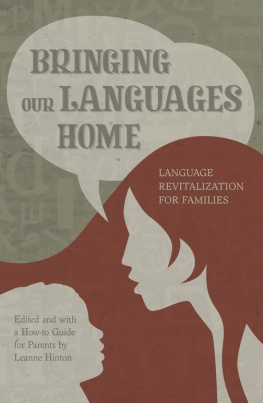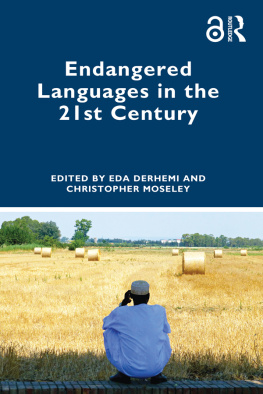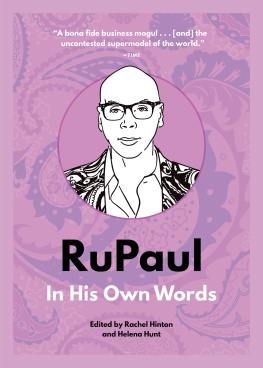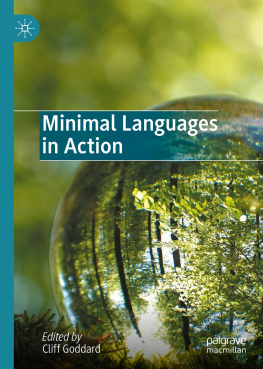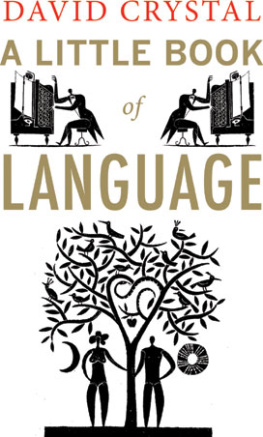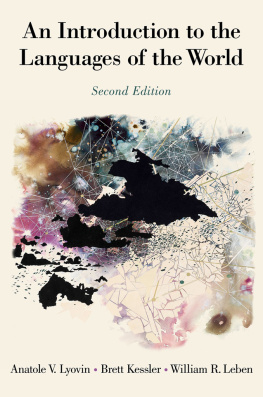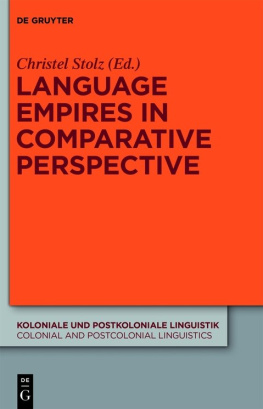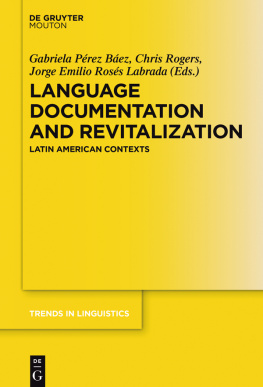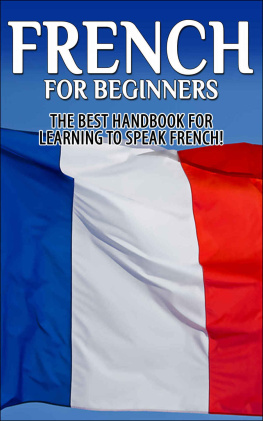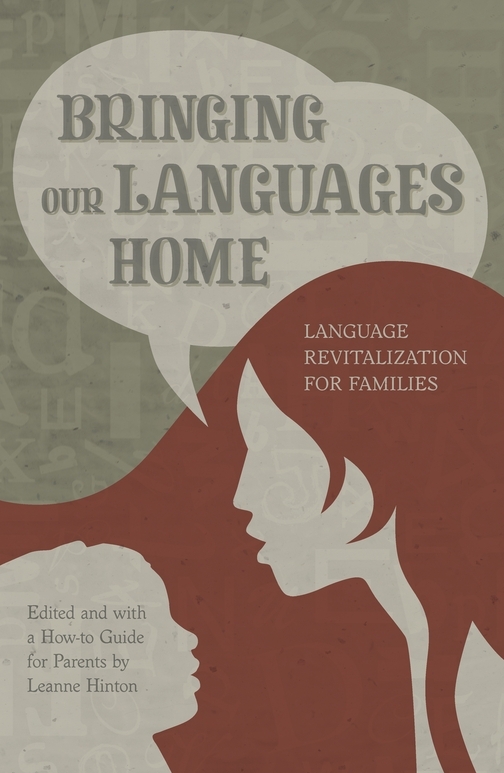ACKNOWLEDGMENTS
I am deeply indebted to the Lannan Foundation, who have been supportive of the work of my colleagues and myself in language revitalization for many years and, most relevant to this book, provided me with a fellowship for a six-week stay in Marfa, Texas, where they have homes set up specifically for writers to get away from the multitasking responsibilities of daily life and simply write. Before that trip, I had long been wanting to write a book about language revitalization for families. Originally I had thought that I would write it myself, but the prospect of doing this seemed overwhelming. I figured that I would have to go all over the world interviewing families and then turn the interviews into a book. And who am I, I thought, who never braved raising a child to speak an endangered language, to write for people who might want to do this? It was not until I settled down in Marfa and thought about nothing else for the first week that the simple answer suddenly dawned on me: why should I write this book at all? It was the families who had done it themselves who should write it. And thus it was that my wonderful weeks in Marfa were spent calling and emailing the people who have become the main authors of this book.
I thank too these authors themselves, who wrote such moving, honest, and powerful chapters about their lives and their families and communities, throwing such great insight on the issues involved in bringing endangered languages into use in their families. Additional thanks go to Cedric Sunray, whose conversations and letters to me added several quotes and much wisdom to the book, and to many other families not personally represented here, but whose efforts to use their heritage languages at home have been inspirational in the development of this book.
The Advocates for Indigenous California Language Survival (AICLS) have been a very important part of my life for the last twenty years. I thank the board members, staff members, and funders, past and present, for support, companionship, and shared wisdom in our mutual journey to learn how best to be of use to communities and individuals who are trying to learn their endangered languages and bring them back into use. Thanks also to all the people in California and elsewhere who have taken part in our programs, especially the Master-Apprentice Language Learning Program, the Breath of Life Language Workshops, and the Language is Life conferences. The participants, mentors, and volunteers have all provided their own wisdom and lessons learned, a mutual help society that has led us all to become better at what we do.
The University of California at Berkeley was my professional home for thirty-five years, and remains so now, at least in my heart, even though I am physically elsewhere most of the time. Many academics feel that they are the lonesome stewards of their fields of interest and worry that their specializations will be neglected by their departments when they retire. But I retired in 2006 knowing that the enterprises I held dear would thrive. My colleague Andrew Garrett took over the directorship of the Survey of California and Other Indian Languages and has turned it into something much greater than it was before. He and Lev Michael, the linguist hired into the position I vacated, continue to make the collaboration with indigenous communities in language documentation and revitalization an ever stronger part of the departments enterprise. I am grateful to have them as colleagues. I am also grateful to our department staff, especially Paula Floro and Belen Flores, for their many years of making my professional life (along with everyone elses) run smoothly, both as an active professor and as emerita.
Finally, I thank my husband, Dr. Gary Scott, for his constant loving support and encouragement of my work, and for the family he brought into my life: Stephanie, Lauren, Robert, and Jessyand now their own childrenhave been and continue to be the most valuable project of our lives.
CONCLUSION:
BRINGING YOUR LANGUAGE INTO YOUR OWN HOME
Leanne Hinton
The families who wrote most of the chapters of this book are language pioneers in a broad, non-centralized social movement of language reclamation. To them, language is one of the most important aspects of maintaining an indigenous identity in the face of the juggernaut of social and political forces that threaten to erase that identity. And yet the parents decision to bring their familys heritage language into their home was beyond political. The decision was a very personal onebased on the desire to give an important gift to their children. The heritage language is a most precious gift of connection to family, community, history, and identity.
There are many who would like to give this gift to their own children but may not know where to start or how to proceed. This chapter, then, is for those readers who would like to do what the parents in this book are doingto bring your heritage language into your home to use with your family. Or perhaps you are already doing this, and could just use some ideas, or some encouragement that you are doing it right. The preceding chapters have in them many lessons for the rest of us, which we will utilize here as a guide.
Becoming Bilingual
My grandnephew Walter is five years old, and at this point in his life he is completely bilingual in English and Dutch. I expect he will remain so all his life, because he has strong input from both languages and strong motivation for using both. Unlike all the other stories in this book, it is actually English in this case that is the minority language. Walters parents are from America but are now naturalized citizens of Holland. They still have strong ties to relatives in the United States (me, for example!) and visiting occurs in both directions every couple of years. They were not fluent in Dutch when he was born, and they still use English at home all the time, except when Dutch friends and playmates come over. When Walter was three he knew English better than Dutch, but now, at age seven and going to school, he speaks Dutch flawlessly. Walter did tell his mother once that he likes Dutch better than English. It is common to prefer the language that ones friends, schoolmates, and teachers speak. This might have been interpreted as a danger sign for his English, were it not that English is well respected in Holland and always taught in the later grades in school, and will continue as the main language of home. Many Dutch people are conversant in English, and every library and bookstore has a section filled with English-language books. And visits from relatives or to the homeland always give a new shot of energy to English. Furthermore, since English is one of the dominant languages of the world, opportunities to use it will always be there for him.
The choice made by Walters parents to speak English at home was what gave him the opportunity to be bilingual. Had they decided to speak Dutch at home to give him a head start for his schooling, he would probably be heavily dominant in Dutch now. It is the language least used in the surrounding society that must be emphasized at home in order to help a child become bilingual.
For children learning an endangered language, the path to bilingualism will not be as easy as it has been for young Walter. The endangered language is not waiting everywhere for a child. No bookstores or libraries are likely to have books in the endangered language. There is no country to go to where the language fills the environment. In most cases, there is no support for the language in the schools. For a child to learn an endangered language, the parents have to find ways to make sure there is a sufficient amount of input for the child to learn, and to make the language beloved of the child. Margaret Noori puts it well:

